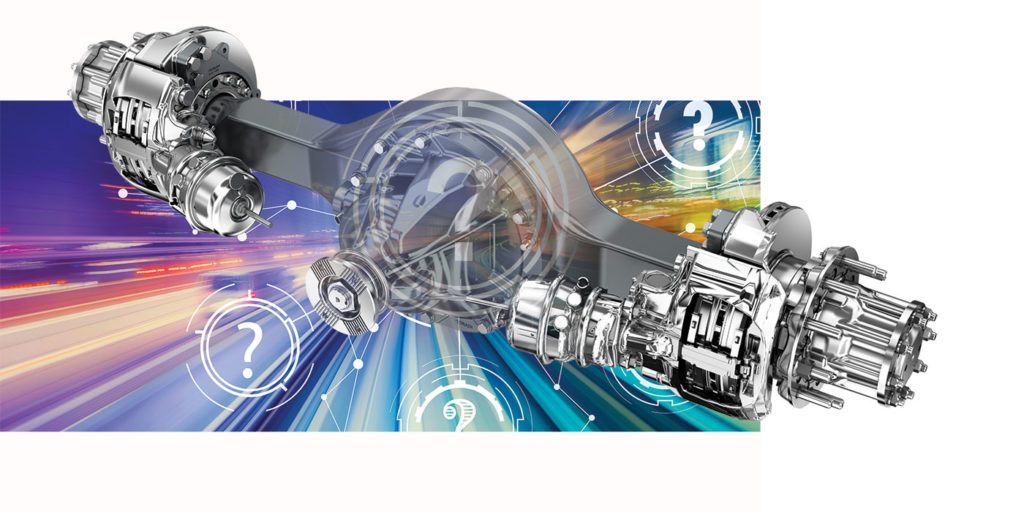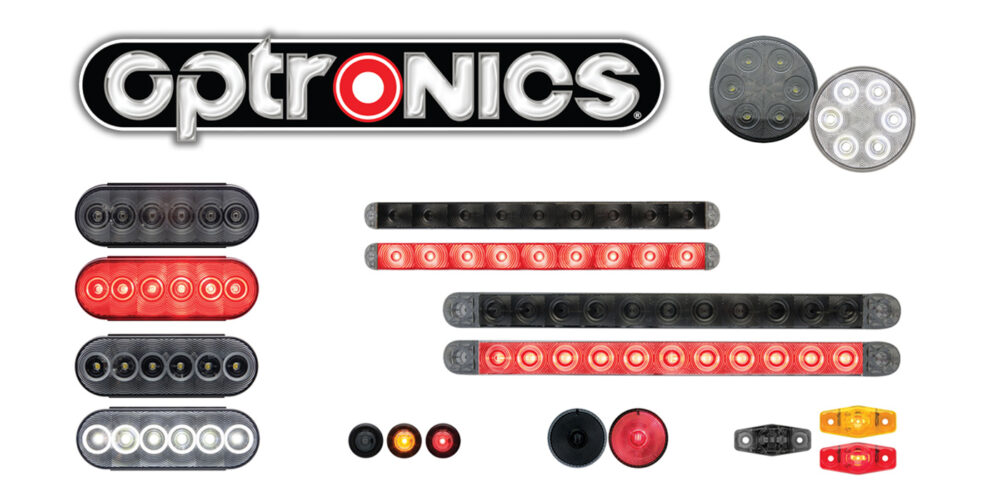The easy answer to the headline question is: Yes! The more complicated answer to the seemingly simple follow up: How? … that will take some explaining.
The impact on your equipment operation
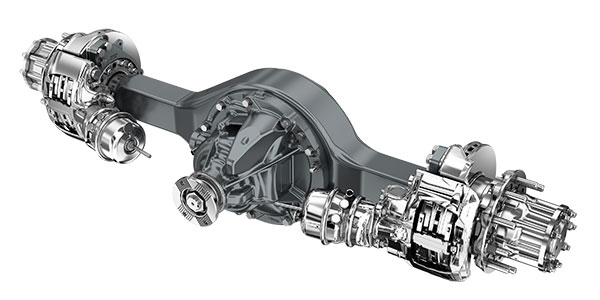
The pandemic put all fleets in a do-what-you-gotta-do predicament. With so much uncertainty, no one could fault you for rolling your trucks into new applications. Chances are that when your trucks were hauling, you didn’t hear any reports of odd axle behavior. That’s most likely because, as Steve Slesinski, director of global product planning at Dana, noted: “Axles are designed for the published and maximum weight rating of the axle.
“There is no issue running loads that are skewing heavier as long as the load does not exceed the maximum weight rating of the axle,” he continued. “In terms of running lighter loads, the impact to the axle is negligible. However, if the axle is very lightly loaded, it could result in less tractive effort. Another consideration is that the axle could respond differently to the suspension it’s attached to if the load is heavier or lighter than normal.”
Heavier loads could require more torque to get moving depending on your axle’s ratio. Remember, faster downsped ratios enable the engine to maintain the 200 HP needed at the wheel end at a lower engine RPM, which adding up to fuel efficiency benefits. Here’s Dale Kwasniewski, director of engineering at Meritor, with the “however:”
“A consequence of heavier loads is the main driveline is exposed to higher torque.”
The end result is more strain on your driveshaft than you originally intended. To combat this, Kwasniewski noted that Meritor has transitioned some customers to higher-capacity yokes and RPL35 drivelines.
The impact on truck fuel economy
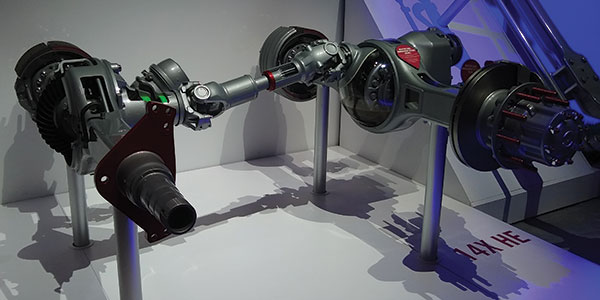
This has definitely changed, though much like the strain on your driveshaft in heavier load applications, the strain on your wallet will depend on the application change you made.
“The axle ratio is generally tuned to meet the duty cycle of the intended application; if the duty cycle changes, either less startability or gradeability, or less fuel economy at highway speeds can be experienced,” Dana’s Slesinski said. “To overcome these issues, if the application duty cycle is significantly changed, the customer has the opportunity to re-ratio the axle where the gear sets and/or the entire head assembly can be replaced to use the most appropriate gear ratio for the new intended application.”
Now that the world has settled into being completely unsettled by pandemic changes, it’s worth revisiting your gearset choices if you find that your applications continue to shift.
“The axle ratio selected will directly impact the engine RPM at cruising speed,” Meritor’s Kwasniewski noted. “Let’s compare a 2.47 and 2.64 ratio in identical vehicle configurations. The 2.47 ratio vehicle will achieve the same road speed as the 2.64 ratio with the engine RPM running 6.8% lower, improving fuel economy.”
There’s no silver bullet for gaining maximum fuel efficiency. Each axle ratio will be geared to the application duty cycle. This may mean a switch to a more flexible ratio if you’re scrambling for loads and need to flatten your overall fuel usage curve. The only way to be sure is to work with your supplier of choice and test the equipment.
“Estimating fuel economy changes within a fleet can be challenging,” Kwasniewski said. “Typically, a fleet will select two new or nearly-new similarly equipped vehicles, and a predetermined route that best simulates the application. To estimate the MPG change or differences, fleets have the option to use vehicle test equipment or weigh the fuel in the tanks. Many fleets develop special fuel tanks that can be weighed before and after the test, which is a lower-cost alternative, but less accurate. A more accurate and easier alternative for measuring MPG can be accomplished with the use of a high precision fuel flow meter connected in line with the fuel feed line. By connecting the fuel feed line to the engine, the rate of fuel consumption is measured.”
The impact on truck axle maintenance
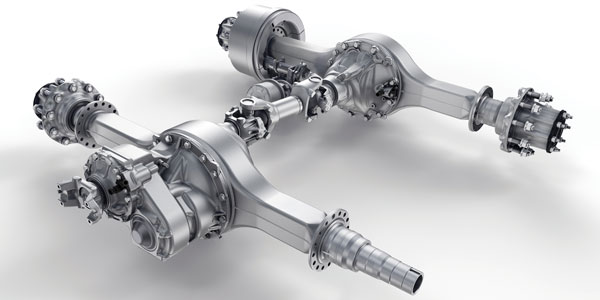
This is where you hope chasing down new jobs to keep your fleets rolling doesn’t actually cost you money. Here’s Leonard Copeland, product marketing manager at Detroit, with the axle maintenance basics:
“Maintenance intervals are dependent upon the duty cycle of the vehicle: short-haul vehicles are maintained at lower mileages, and long-haul vehicles are recommended to be maintained at longer mileages,” he said. Where the impact on the axle operation was heavily dependent on loads, maintenance changes will also depend on your mileage, even if your load weights have been consistent.
“During initial maintenance, an all-wheel axle alignment is recommended,” Copeland continued. “Axle lube and visual inspections for leaks and cracks in welds are key to axle maintenance. In addition, regular inspections of the axle breather, lube levels and magnetic drain plug, if equipped, and tire inspection, looking for tire wear as well as for mismatched conditions, are recommended.”
For example, on Detroit axles, Copeland noted that the oil change interval for long-haul vehicles can be extended to 500,000 miles for axles with weight ratings of 34,000- to 40,000-lb. using synthetic lubricant if a lubricant analysis shows adequate quality. Oil must be changed at least every four years, and more often if the axle is exposed to high temperatures and steep grades. That last part is worth checking on if your routing has changed.
Axle lubrication requires attention more often, with Kwasniewski noting that Meritor recommends that the lube level is checked every 25,000 miles in linehaul applications, 10,000 miles for general service applications and 5,000 miles for heavy service applications.
“A lube level check should include checking for all of the following abnormalities: low axle oil levels, assembly oil leakage, abnormal debris on the fill plug magnet, visual check of the oil to evaluate moisture content, visual check to ensure axle breather is clean and free of blockage,” he advised.
Upon inspecting, cracking and leaking are the most common axle service issues.
“Part of addressing a leak is to identify why the component is leaking, as the seal leak may be a secondary condition,” Kwasniewski said. “For instance, measuring endplay is suggested prior to replacing seals. Abnormal high endplay may very well be the cause of the seal leak. Finding and addressing the high endplay now may avoid a more significant repair down the road. One thing is for sure: Finding and addressing the cause of leakage early on can prevent a costly repair and unnecessary downtime.”
Outside of application, an unconventional cause of axle service issues is using the wrong tires for the axle.
“To help our customers understand the impact of mismatched tires, we updated the maintenance manual and issued a special bulletin on the topic,” Copeland said. “Mismatched tires cause heat spikes in the axle housing, which can lead to excessive wear to the IAD and the ring and pinion teeth.”
The impact on your spec’ing decisions going forward
“Spec’ing a vehicle with downspeeding in mind requires careful consideration of the engine, transmission, drivelines and drive axle, and fleets must approach downspeeding using a true, system-level approach,” Meritor’s Kwasniewski said. “Each component is a critical link in building a reliable and efficient vehicle capable of delivering trouble-free performance over the life of the vehicle. While spec’ing for downspeeding does limit the versatility due to the limited startability, the benefits of faster axle ratios is primarily the increase in fuel economy due to the lower engine RPM at high speeds.”
“For fleets spec’ing new trucks with downsped ratios, a combination of spec’ing the right axle ratio with a direct-drive or overdrive transmission will make it more applicable to future applications,” Slesinski said.

